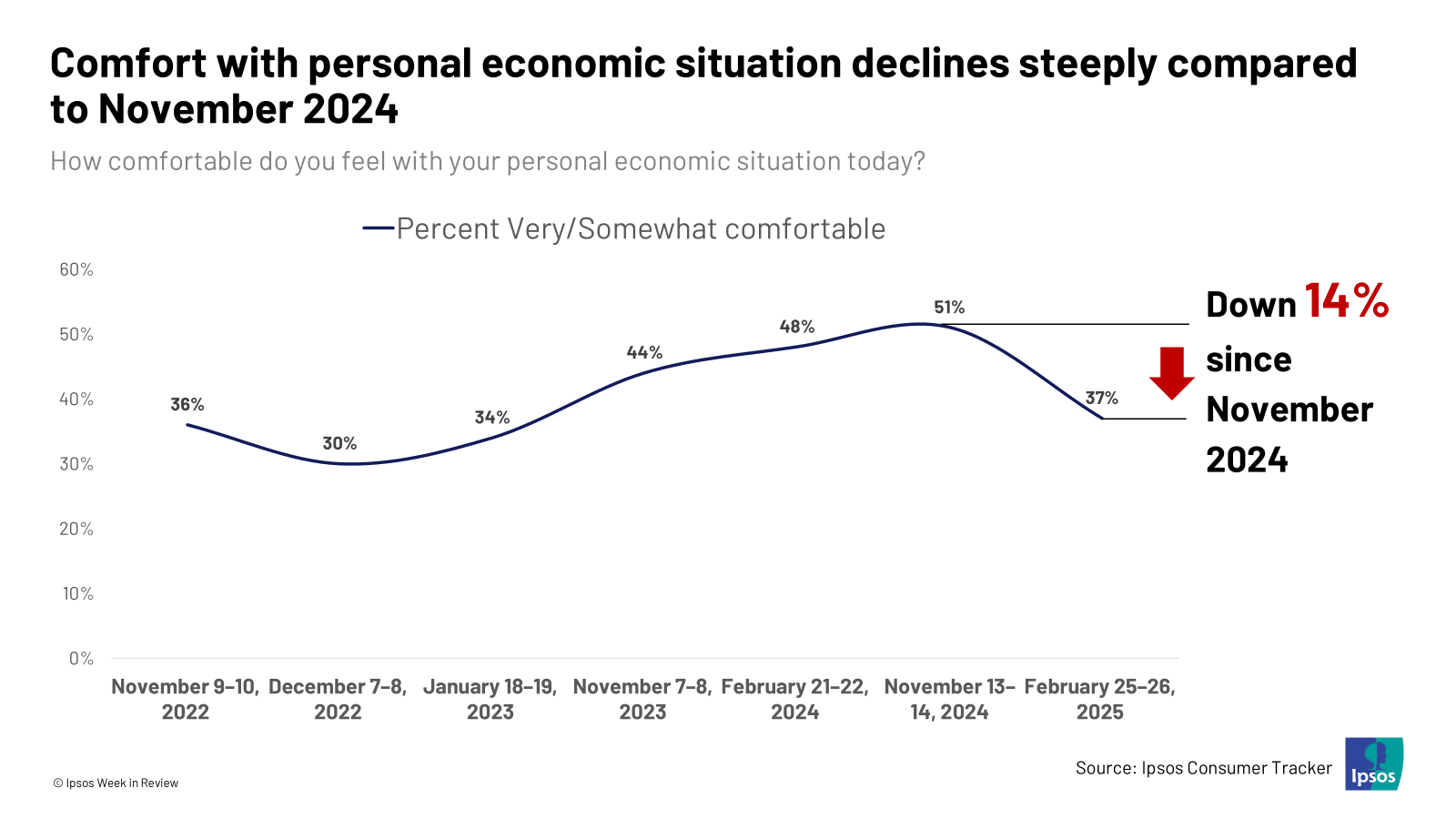Americans sour on the economy
Throughout the 2024 presidential campaign, then-candidate Donald Trump’s biggest strength was the economy.
It was the issue that Americans cared most about and was the issue that propelled him back to the White House. The American public is nuanced. But the economy is always a persistent driver of public opinion. Just after his election win, Americans reacted accordingly, with consumer confidence seeing jumps across the board.
However, just months into Trump’s second term, a decline in several consumer confidence indices suggest that consumer sentiment is softening.
What’s driving this decline? And what could lie ahead? Below are five charts on where Americans stand on their finances.
- Consumer confidence declines. Trump’s election win sparked a bump in consumer confidence, but across several measures of consumer confidence, that uptick seems to be fading. Is this a short-term regression to the mean or a sign of things to come? We will see.

- What’s driving the drops in consumer sentiment? Three of the four sub-indices of the LSEG/Ipsos Consumer Confidence Index have declined since December, with the most pronounced drop coming from the jobs sub-index. Is this a one-off or will this be a trend? Stay tuned.

- Rising unease. Americans’ comfort with their personal financial situation has dropped past the post-election bump to its lowest point since early 2023. Americans are uneasy. Watch this space.

- Is partisanship behind the curtain? Like most things in America, partisanship, particularly softening consumer confidence among Democrats, is one factor in America’s softening economic outlooks. In fact, consumer confidence has become even more polarized compared to the last months of the Biden administration.

- Tariffs and prices. Consumers are already feeling crunched by prices. The looming potential of tariffs may contribute to this crunch. Right now, less than half of Americans say they have seen prices rise specifically due to proposed tariffs. If Trump’s new tariffs go into place next Tuesday as planned, this number could rise.

The continued impact of inflation, high levels of political polarization, uncertainty around tariffs, and softening confidence in areas like the job market have contributed to an overall dampening of consumer sentiment. This growing unease may be a cause for concern for the Trump administration should they want to avoid following the same path as the Biden administration.
That said, the biggest unanswered question is whether consumer sentiment is reverting back to its pre-election state or if this worsening is a sign of things to come. Only time will tell.
Insights into the New America brought to you by Clifford Young, Sarah Feldman, and Bernard Mendez.



